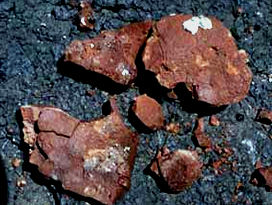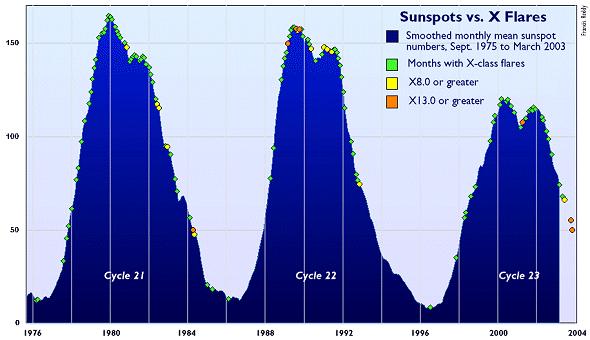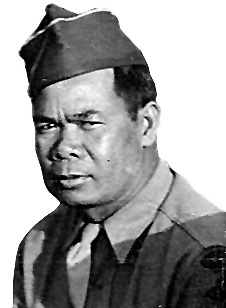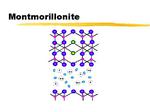| Sunday, November 16, 2003 |  |
|
|
|
 16 Nov 2003 @ 21:29 16 Nov 2003 @ 21:29
By Andrew Gumbel in Los Angeles The Independent
November 9, 2003
An unprecedented array of US intelligence professionals, diplomats and former Pentagon officials have gone on record to lambast the Bush administration for its distortion of the case for war against Iraq. In their view, the very foundations of intelligence-gathering have been damaged in ways that could take years, even decades, to repair.
A new documentary film beginning to circulate in the United States features one powerful condemnation after another, from the sort of people who usually stay discreetly in the shadows -- a former director of the CIA, two former assistant secretaries of defence, a former ambassador to Saudi Arabia and even the man who served as President Bush's Secretary of the Army until just a few months ago.
Between them, the two dozen interviewees reveal how the pre-war intelligence record on Iraq showed virtually the opposite of the picture the administration painted to Congress, to US voters and to the world. They also reconstruct the way senior White House officials -- notably Vice-President Dick Cheney -- leaned on the CIA to find evidence that would fit a preordained set of conclusions.
Note: To read the full article go here
|
|
|
|
 16 Nov 2003 @ 00:22 16 Nov 2003 @ 00:22
By Helen Phillips New Scientist November 12, 2003
When you first fall in love, you are not experiencing an emotion, but a motivation or drive, new brain scanning studies have shown.
The early stages of a romantic relationship spark activity in dopamine-rich brain regions associated with motivation and reward. The more intense the relationship is, the greater the activity.
The regions associated with emotion, such as the insular cortex and parts of the anterior cingulate cortex, are not activated until the more mature phases of a relationship, says Helen Fisher, an anthropologist from Rutgers University in New Jersey.
Fisher and colleagues recruited seven male and 10 female volunteers who claimed to be madly in love. They asked them to look at pictures of either their loved one or another familiar person while inside a functional MRI scanner.
Eating chocolate
Early on in a relationship, the images showed that the brain seems to be very focused on planning and pursuit of pleasurable reward, says Fisher, mediated by regions called the right caudate nucleus and right ventral tegmentum. The same regions become active when a person enjoys the pleasure of eating chocolate, she adds.
There are also patterns that resemble aspects of obsessive compulsive disorder. "Activity in one particular area of the anterior cingulate cortex is in common," says Lucy Brown, a neuroscientist from Albert Einstein College of Medicine in New York, who was part of the research team. "The activity is correlated with the length of a relationship, lasting just into the emotional stage."
There are some differences between love-struck men and women, says Fisher. Women in love show more emotional activity earlier on in a relationship. They also seem to quiz their memory regions as they look at pictures of their partner, perhaps paying more attention to their past experience with them.
For men, perhaps unsurprisingly, love looks a little more like lust, with extra activity in visual areas that mediate sexual arousal.
The team has since moved on to examining the final phase of romance. "We are now looking at people who have just been rejected," says Fisher. The research was presented at the Society for Neuroscience's meeting in New Orleans on Tuesday.
|
|
| Saturday, November 15, 2003 |  |
|
|
|
 15 Nov 2003 @ 08:40 15 Nov 2003 @ 08:40
The discovery of 71 pieces of red ochre in the oldest section of a burial cave in Israel has prompted researchers to suggest that the symbolic thinking that marked the beginning of modern-day human thought arose deep in the Stone Age. The received wisdom has been that the assignment of symbolic meaning to specific items and colours emerged no earlier than 50,000 years ago. But the association of red ochre with skeletons found in the oldest section of the Qafzeh Cave has been taken to indicate that symbolic burial rites were being performed more than 90,000 years ago.
The controversial theory that modern thought did not emerge with the appearance of Upper Paleolithic cultures has been put forward by Erella Hovers of the Hebrew University of Jerusalem, who directed the Qafzeh project. She argues that in the Middle East and Eurasia "many symbolic behaviours that are considered modern existed for a time [before the Upper Paleolithic] and then disappeared, to be reinvented time and again". The 'continual reinvention' proposal stems from the fact that similar ochre use does not appear again in the Qafzeh Cave until 12,700 years ago.
Red ochre is a form of iron oxide which yields a pigment when heated. The precise meaning of the use of ochre is unknown, but it was widely used in primitive societies and even today the colour red is used in non-industrial cultures as a symbol of fertility or vitality. The ochre at Qafzeh was brought to the cave from nearby sources. Large hearths and ochre-stained tools in the same sediment levels that contain the oldest human remains show that the ochre was worked on-site. Hovers and her co-workers say that the pigment was used with the shells of inedible molluscs found in the cave, possibly in symbolic activities related to burying the dead. Prehistoric symbolic expressions most commonly occurred in large populations that stayed for extended periods in resource-rich locations, says Hovers. But in the small nomadic groups typical of Stone Age Middle East symbolic behaviour would have surfaced for special activities at special sites, such as interment of the dead at Qafzeh Cave.
A report published in the August-October Current Anthropology has had a mixed reception. Sally McBrearty of the University of Connecticut believes that Qafzeh adds to the evidence of the great antiquity of the colour red as a symbolic category, pointing out that engraved ochre dates to 77,000 years ago in South Africa. On the other hand, Richard G. Klein of Stanford University holds that ochre use was merely a step towards advanced symbolic culture, which he places at around 50,000 years ago.
Source: Science News (1 November 2003)
NOTE: If you want to follow the Scarlet Thread, take a look a Julie's blog where she posts another exerpt from her book in progress.
|
|
|
|
 15 Nov 2003 @ 07:21 15 Nov 2003 @ 07:21
Space Weather News for Nov. 14, 2003
Using a technique called helioseismic holography, astronomers can do something amazing: look through the sun to find sunspots on the far side of our star. On Nov. 11th and 12th their holographic maps revealed giant sunspots 486 and 488--the same active regions that caused so much intense space weather a few weeks ago.
These spots are still active. Explosions from their vicinity have been hurling clouds of gas over the sun's limb in recent days. The sun's 27-day rotation will soon carry the pair around to the Earth-facing side of the sun. More solar storms are possible when they reappear on or about Nov. 19th.
Meanwhile, another one of last month's giant sunspots has already reappeared. Active region 484 is peeking over the sun's eastern limb. The sunspot looks smaller than it did in late October, but it too remains active--hurling a bright coronal mass ejection into space on Nov. 13th.
|
|
|
|
 15 Nov 2003 @ 07:16 15 Nov 2003 @ 07:16
ANTI-WAR/COMMUNITY ACTIVISTS LAUNCH FOOD DRIVE TO SUPPORT STRIKING GROCERY WORKERS KICK-OFF PRESS CONFERENCE AND RALLY TO TAKE PLACE ON SATURDAY
NOV. 15 at 11:00 AM Los Angeles, CA
Join hundreds of working families, community leaders, anti-war activists, striking workers and their families at the VONS Grocery Store at 1430 S. Fairfax Ave. Community support is growing for the just struggle of the striking workers and their families for decent pay, union rights, and medical benefits
The International ANSWER Coalition, has created the Community Action Project to Support Labor (CAPSL). This week CAPSL is initiating a mass community food drive in support of the striking and locked-out UFCW grocery workers fighting to protect their health benefits. FOOD DROP OFF CENTERS ARE NOW LOCATED IN TARZANA, KOREATOWN, SOUTH CENTRAL L.A., AND VENICE.
Hear: Community Leaders and Activists, Striking workers and their families including:
Rev. Richard Byrd, KRST Unity Center for African Spirituality in Los Angeles Ely Orozco, locked out UFCW worker and labor activist Jim Franklin, UFCW Local 770 Executive Board Member and Business Agent, Member Inglewood City Council Jim Lafferty, Executive Director, National Lawyers Guild Juan Jose Gutierrez, Director of Latino Movement USA John Parker, Community Action Project to Support Labor John Heard, Actor Pam Afrika, Int?l Concerned Family and Friends of Mumia Abu-Jamal Music by Rap Artist Will Be ************************************************************
Please consider making a donation to the important work of the ANSWER Coalition. Log on to www.answerla.org to use Paypal, call 213 487-2368 to use Mastercard or Visa by phone, or mail check to: ANSWER 422 S Western Ave, Rm 114 L.A., CA 90020
Note: for more info check here or here
|
|
|
|
 15 Nov 2003 @ 00:01 15 Nov 2003 @ 00:01
By Samisoni Pareti Associated Press November 13, 2003
NABUTAUTAU, Fiji (AP) - Villagers in a remote Fijian community staged an elaborate ceremony of apology Thursday for the relatives of a British missionary killed and eaten here 136 years ago.
The Rev. Thomas Baker and eight Fijian followers were killed and devoured by cannibals in 1867 in the village of Nabutautau, high in the hills of the South Pacific island of Viti Levu. Residents say their community has been cursed ever since.
In a mixture of ancient pagan and modern Christian rites, the villagers have staged a series of ceremonies hoping to erase the misfortunes they believe have kept them poor.
The rituals - which started about a month ago - culminated Thursday with the offering of cows, specially woven mats and 30 carved sperm-whale teeth known as tabua to 10 Australian descendants of Baker.
``This is our third apology but, unlike the first two, this one is being offered physically to the family of Mr. Baker,'' Ratu Filimoni Nawawabalavu, the village's chief, told The Associated Press.
Nawawabalavu is the great-grandson of the chief responsible for cooking the missionary in an earthen oven.
Past apologies have not helped. In 1993, villagers presented the Methodist Church of Fiji with Baker's boots - which cannibals tried unsuccessfully to cook and eat.
There are differing accounts of Baker's demise. A villager said last month the incident started when the chief borrowed Baker's hat. Baker tried to take it back without knowing that touching a chief's head was taboo and punishable by death.
Others say the missionary lent the chief a comb, then touched his head as he tried to retrieve it from the chief's tight, curly hair.
Villagers believe that since 1867, either Baker's spirit or disapproving gods have made sure that modern developments like electricity, a school, piped water supply and other essentials enjoyed by most Fijian villagers have been kept from them.
It was only two weeks ago that a logging company cut a track to the village. Prime Minister Laisenia Qarase, who flew into the village by helicopter for the ceremony, is leading a campaign to improve life in isolated areas.
Fiji, a nation of 320 islands, is about 2,250 miles northeast of Sydney, Australia.
|
|
|
|
  15 Nov 2003 @ 00:01 15 Nov 2003 @ 00:01
14:32 01 October 03
NewScientist.com
Early female-dominated societies lost their power to men as they acquired cattle, a new study demonstrates.
The idea that early communities became "patrilineal", with male status and inheritance being most important, when they gained cattle has been debated since the beginning of modern anthropological studies in the nineteenth century. However, no one had been able to convincingly demonstrate a causal link.
Now Clare Janaki Holden and Ruth Mace at University College London, UK, believe they have produced some of the firmest evidence yet to back the theory.
They made a linguistic tree of the evolution of 68 African Bantu languages, which include modern day Swahili and Zulu, and correlated this with the acquisition of cattle herds by those language speakers and the type of society they lived in.
The researchers then used a clever mathematical model to infer what had happened in the past to produce the pattern of languages seen today. "At an early stage these populations were more matrilineal than today," Holden told New Scientist. "They then adopted cattle and became patrilineal."
"I think this study is very important," says Mark Pagel, an evolutionary biologist at the University of Reading, UK. "What they are trying to show is that human mating patterns, wealth inheritance and dominance systems respond to ecological variation in the same way that we would expect animal populations to behave."
Bride wealth
Holden believes reason the acquisition of cattle led to a switch to male-dominated societies is most probably linked to the system of "bridewealth". This tradition, in which a bridegroom gives cattle to a bride's family, is particular to the Bantu speaking regions of sub-equatorial Africa.
"If a man's got lots of cattle he can have lots of wives. So if you have cattle it makes sense to give it to sons rather than the daughters," she says. The fundamental reason for this is that wealthy, and therefore attractive, sons are likely to have more children than daughters, because while women must bear each child a man need only impregnate a woman.
Holden believes that the acquisition of wealth may generally causing a shift in power to men: "If you have valuable resources they are probably going to become monopolised by men because men can use them to acquire more wives or women."
Another factor that could be important, Holden says, is cattle raiding, with men better able to defend against marauders.
Maximum likelihood
The Bantu linguistic tree created by Holden and Mace charts the divergence of the languages from a common starting point about 3000 years ago. They then added data about each population's ownership of cattle and their type of society, matrilineal or patrilineal.
The pair then applied the mathematical model, developed by Pagel, to find the "maximum likelihood" historical scenario that would have produced the modern day situation. They found that acquiring cattle did indeed cause a shift to a man's world, or one of "mixed descent" where both sexes are important for inheritance.
Crucially, they were able to account for the fact that the cultures were related. Cultural traits tend to be passed down generations in the same way as genetic ones.
Pagel, who is also Mace's husband, says the study shows the cultural phenomenon arose independently a number of times and "greatly strengthens" the belief that the cattle ownership and patrilineal societies have a causal connection and are not observed together for some other reason.
Journal reference: Proceedings of the Royal Society B (DOI 10.1098/rspb.2003.2535)
Shaoni Bhattacharya
© Copyright Reed Business Information Ltd.
|
|
| Friday, November 14, 2003 |  |
|
|
|
 14 Nov 2003 @ 16:44 14 Nov 2003 @ 16:44
Shriners have the fez. Other clubs might have antlers.
By Emil Guillermo
RecordStaff Writer
Published Friday, November 14, 2003
But the fraternal organization known as the Legionarios del Trabajo of America have an apron, sash and fuzzy velure cap worn tight on the head.
If that appeals to you, you're in luck. They're looking for young, new members. And when you pay the $25 initiation fee and $15 annual dues, you'll get the secret password.
Until then, forget it.
"If you show me your membership card, I'm willing to give it to you," said Camila Carido, 92, the group's grand dame, who in 1935 was the first woman admitted to the organization in Stockton.
Carido and many of the 660 members of the Legionarios are meeting this weekend at the Radisson Hotel Stockton for their 14th triennial convention.
They're wondering how long they can keep it up. After 79 years, the organization, which has its roots as a support group for Filipino immigrants to America, finds its numbers dwindling.
Members are dying faster than new members are found. And its a double-whammy because the group, a legitimate nonprofit, is a mutual-aid society that gives a $3,500 death benefit to member families.
Last year, 55 members died. As they do, the funds dry up.
"We're paying out more than we take in," said Zosimo De Veas, 65, who is otherwise known as an illustrious brother and the group's grand master for the past nine years.
De Veas, an Internal Revenue Service employee who lives in Hercules, drives to Stockton each weekend to run the organization from its Grand Lodge on South San Joaquin Street.
Along with the lodge, the Legionarios own 160 acres of farmland in Lathrop that's currently leased out.
"They grow tomatoes," said Ernie Mabalon, 79, the group's supreme minister.
At this week's national meeting, some members suggested the group sell the farmland.
"Never," said Mabalon. "That was bought with the sweat of the old farm laborers."
Those early immigrants were the founders of the Legionarios, and included Filipino labor leaders like Larry Itliong, who some considered Cesar Chavez's right-hand man. Originally formed in Manila, the Legionarios was seen as the Filipino answer to the Free Masons.
The symbols and images are similar but with a heavy dose of Filipino national heroes and Christian ideals. Nevertheless, the group says it is nonsectarian and nondenominational and preaches tolerance.
When the group arrived in the United States in 1924, its main purpose was to serve as a social support system to the mostly male Filipino immigrants.
The hostile social pressures of the time, which included anti-intermarriage laws, made the Legionarios even more important to the Filipino community.
Today, however, the Legionarios are dying off. The one-time national group is down to a few chapters in California and Washington state.
Nowadays, a new, young member might be a 60 year-old doctor looking for people to socialize with.
"When you try to recruit a 25- to 26-year-old, they just say, 'Oh my God,'" said Felino Cabusora, 75, of Union City.
Cabusora joined three years ago for the fellowship, the club's tradition and the death benefit -- which could be reduced if the members keep dying off at a faster rate.
"Age and death have caught up with us," Mabalon said.
But so have the women. The one-time predominantly male organization is now two-thirds female.
"Will we have a woman grand master or mistress?" De Veas asked at Thursday's Ladies Conference Luncheon.
Carido, who is the mother of Stockton Vice Mayor Gloria Nomura, was honored at the luncheon and put the group's problem in more-direct terms.
"This is the last time to see all of you to give my love," said the 92-year-old.
But De Veas is more optimistic. The coronation ball today and the banquet Saturday are open to the public.
A big push for new members is planned.
And the year's almost over, and there are only 26 deaths.
If you join, you'll get the secret password, the sign and the handshake. Until then, don't ask.
"We keep it among ourselves," De Veas said.
"For members."
|
|
|
|
14 Nov 2003 @ 08:02
Solar maximum is years past, yet the sun has been remarkably active lately. Is the sunspot cycle broken?
NASANovember 12, 2003: Imagine you're in California. It's July, the middle of summer. The sun rises early; bright rays warm the ground. It's a great day to be outside. Then, suddenly, it begins to snow--not just a little flurry, but a swirling blizzard that doesn't stop for two weeks.
That's what forecasters call unseasonal weather.
It sounds incredible, but "something like that just happened on the sun," says David Hathaway, a solar physicist at NASA's Marshall Space Flight Center.
Only a few weeks ago solar activity was low. The face of the sun was nearly blank--"very few sunspots," says Hathaway--and space weather near Earth was mild. "Mild is just what we expect at this point in the 11-year solar cycle," he explains. "The most recent maximum was in 2001, and solar activity has been declining ever since."
Then, suddenly, in late October the sun began to behave strangely. Three giant sunspots appeared, each one larger than the planet Jupiter. In California where smoke from wildfires dimmed the sun enough to look straight at it, casual sky watchers were startled by the huge blotches on the sun. One of them, named "sunspot 486," was the biggest in 13 years.
Sunspots cause solar flares and, usually, the biggest flares come from the biggest spots. The three giant sunspots unleashed eleven X-class flares in only fourteen days--equaling the total number observed during the previous twelve months. "This was a big surprise," says Hathaway.
The effects on Earth were many: Radio blackouts disrupted communications. Solar protons penetrated Earth's upper atmosphere, exposing astronauts and some air travelers to radiation doses equal to a medical chest X-ray. Auroras appeared all over the world--in Florida, Texas, Australia and many other places where they are seldom seen.
Researchers rank solar flares according to their x-ray power output. C-flares are the weakest. M-flares are middling-strong. X-flares are the most powerful. Each category has subdivisions: e.g., X1, X2, X3 and so on. A typical X-flare registers X1 or X2. On Nov. 4th, sunspot 486 unleashed an X28 flare--the most powerful ever recorded.
"In 1989 a flare about half that strong caused a widespread power blackout in Quebec," recalls Hathaway. Last week's blast was aimed away from Earth, so its effects on our planet were slight--a bit of good luck.
All this happened two years after solar maximum, which raises a question: is something wrong with the solar cycle? Is the sun going haywire?
"Nothing's wrong," reassures Hathaway. The sun isn't about to explode, nor is the sunspot cycle broken. "These latest sunspots were whoppers," he allows, "but sunspot counts averaged over many weeks are still declining as predicted. We're still on course for a solar minimum in 2006."
Indeed, it's possible that what we've just experienced is a normal part of the solar cycle, speculates Hathaway. "There's a curious tendency for the biggest flares to occur after solar maximum--on the downslope toward solar minimum. This has happened during two of the last three solar cycles."
Consider the year 1984, says Hathaway. Sunspot counts were plunging, and the sun was rapidly approaching the 1985-86 solar minimum. Suddenly a giant sunspot appeared, Jupiter-sized like sunspot 486, and unleashed two dozen M-flares and three X-flares, including a remarkable flare registering X13. People then probably wondered too if the solar cycle was broken.
"It's hard to be sure what's normal and what's not," notes Hathaway. "Astronomers have been observing x-rays from the sun for only 35 years--or three solar cycles. We can't draw good statistical conclusions from so few data."
One thing is certain, though: flurries of solar activity can happen at any time. The next time, says Hathaway, could be just a week or so away.
Sunspot 486 and its companions are on the far side of the sun now, carried around by the sun's 27-day rotation. "We suspect they're still active," says Hathaway, because the Solar and Heliospheric Observatory--a sun-watching satellite--has photographed clouds of gas being thrown over the sun's limb by unseen explosions. Unless these sunspots dissipate, which could happen, they will reappear on the Earth-facing side of the sun beginning as early as Nov. 14th.
And then...? No one knows. "We might get some more unseasonal space weather," says Hathaway. But this time he won't be surprised.

|
|
| Thursday, November 13, 2003 |  |
|
|
|
 13 Nov 2003 @ 23:59 13 Nov 2003 @ 23:59
Ananova November 6, 2003
Spending more time in the pub could be good for your brain.
Researchers from University College, London, found that while a drink with your friends may be bad for your waistline, it could be good for your mind.
In a study due to be published this month, they report on a direct link between the social aspects of going to the pub and improved verbal and numerical ability.
This contrasts starkly with more restrained activities such as gardening and painting which, the study found, had no benefit to the mind at all.
Psychologists from the university's Department of Epidemiology and Public Health analysed information on 10,000 civil servants of all grades working in London, says The Times .
The results, which were standardised to account for age and social class, were examined for connections between mental ability and the way that people spent their leisure time.
The researchers found that the best way to help the mind was by regular cultural visits to theatres, art galleries and stately homes.
This was closely followed by reading and listening to music. Involvement in clubs and voluntary organisations were also highly beneficial, as were taking part in courses and evening classes.
But the study, which will be published in the Journal of Epidemiology and Community Health, also found that social activities, like going to the pub, could be good for the mind.
The authors emphasise their study looked at social aspects alone and not the effect of beer on the brain.
|
|
| Wednesday, November 12, 2003 |  |
|
|
|
 12 Nov 2003 @ 23:59 12 Nov 2003 @ 23:59
My father was born on 5/5 and died on 11/11. It has been 14 years since he died. Every year my mother and family attend the Veteran's Day Memorial Cervice at the cemeter where he is buried. We were given a flag which was drapped over his cofin when he was buried. It flys once a year in this ceremony honoring him and his commitment to his adopted home.
My two sisters and one heart sister toasted him at dinner. He is not forgotten.
I miss you Daddy, you live in my memories and heart!
My eldest sister wrote this piece in honor of our father last year.
Owa * Juan * John * Dad
(A Veteran’s Day Tribute – 2002)
by Carolina Layson Goodman
COURAGEOUS
· How brave of Owa to leave the comfort of his mother, father, nine brothers and sisters, cozy nipa hut, and beautiful rice fields on the island of Panay as a teenager to seek his fortune half-way around the world. (ca. 1918)
· Duty drew John to join the army in WWII to defend his homeland. (1943)
· With confidence in himself, John followed a dream and moved his family to Palm Springs. (1953)
SHY
· A man of few words, Dad always seemed ready with a smile or a joke.
· Either working (16 hours/day) or sleeping (6 hours/day), Dad had little time to chum with buddies.
INDUSTRIOUS
· Who was the lucky Stockton family who benefited from a devoted houseboy named Juan?
· Juan must have impressed the Manongs with his hard-working attitude as he learned to cleave meat in their butcher shop.
· By cooking meals for troops in WWII, John gained a skill that would serve him for the rest of his life.
· Opening a restaurant in Stockton was a tremendous undertaking for John. Giving free meals to friends and family was his downfall.
· Working in two different restaurants during the desert’s tourist season and also in Lone Pine or Lake Arrowhead from June to October made it possible for John to support his wife and five children.
· The fruit and vegetables that came from Dad’s garden impressed and delighted the whole filipino community.
GENEROUS
· John never failed to send money to family back in the Philippines.
· Dad would give everything he could to everyone else, wearing second-hand clothing and eating leftovers whenever possible.
LOVING
· Like a mother hen, late each night upon returning home from work, Dad would make the rounds, checking to see that each of his children was safe and well.
· Until he was wheelchair bound, John devoted himself to doing whatever he could to making his wife happy.
|
|
|
|
 12 Nov 2003 @ 15:04 12 Nov 2003 @ 15:04
By John Noble Wilford New York Times November 11, 2003
Somewhere in the imagination, at an intersection of the idealized Golden Age and mankind's descent into manifest imperfection, existed the island civilization of Atlantis. This realm of divine origin was ruled from a splendid metropolis in the distant ocean. Its empire, described by a philosopher as "larger than Libya and Asia combined," enjoyed prosperity and great power.
In time, driven by overweening ambition, a common theme in antiquity and not unheard of today, Atlantis set out to conquer lands of the Mediterranean. But in a terrible day and night of floods and earthquakes, Atlantis was swallowed by the sea, sinking into legend.
The story endures as a classic in the genre of lost worlds long vanished, the ruins and treasures of which are surely somewhere out there yet to be found. Legends, though, are often mirages, forever shimmering out of reach, yet exerting an attractive power beyond reason.
Sometimes the pursuit of legends leads to unforeseen knowledge.
In the 12th century A.D., the legend of Prester John, a rich and powerful Christian monarch somewhere in Asia, drew intrepid seekers, eventually including Marco Polo, who opened Western eyes to the wonders of the East. When no one found Prester John in Asia, the legend did not go away; its locale shifted to Africa.
The golden city of El Dorado eluded hellbent adventurers, whose frustrated quest nonetheless put much of South America on the map.
The fabled Seven Cities of Cibola, castles in the air that proved to be nothing more than humble Indian pueblos, drew Europeans across tortured miles and years of discovery in what is now the Southwestern United States.
The tale of the lost continent has sent respected classical scholars to their texts for corroboration that Atlantis was more than fantasy. Archaeologists, geologists and divers have plumbed ocean depths where the island supposedly sank out of sight thousands of years ago. Not a scrap of compelling evidence supporting the legend has ever turned up.
Such a negative discovery might be conclusive enough for most legends to pass from rock-hard belief to literary artifacts of prescientific cultures living in a world of limited horizons and boundless mystery. But true believers, complaining that scientists have got it all wrong, continue the search.
Generations of adventurers, writers, mystics and cranks have satisfied themselves of the legend's reality. Their "solutions" fill more than 2,000 books and countless articles. The lost continent also inspired works by authors as diverse as Francis Bacon and Arthur Conan Doyle, and Hollywood has weighed in with any number of forgettable movies.
Richard Ellis, author of "Imagining Atlantis," thinks the legend is fantasy. "Atlantis lives on in people's minds largely because you cannot prove it doesn't exist," he said recently. "You can't search every inch of the ocean bottom, and so the hope remains alive and the promise of finding treasures in sunken palaces."
The sole source of the Atlantis story is by no means obscure. In two dialogues, the "Critias" and the "Timaeus," Plato in the fourth century B.C. described a resplendent island empire in the Atlantic Ocean beyond the Pillars of Hercules (the Strait of Gibraltar). "This dynasty, gathering its whole power together," Plato wrote, "attempted to enslave, at a single stroke, your country and ours."
Even after disbelief in ancient gods undercut literal acceptance of the legend, medieval maps were sprinkled with imaginary islands in the Atlantic, including Antillia. Some experts suspect this preserves in garbled form the name of Atlantis and a lingering belief that its remnants may still exist. The maps encouraged navigators in their quests, among them Columbus.
The 20th century was hard on Atlantis dreams. Detailed mapping of the sea floor and the new theory of plate tectonics made it clear, geophysicists say, that land masses resembling Atlantis never existed in the Atlantic.
Undeterred, ardent believers went looking elsewhere: in Scandinavia, the Bahamas and the Aegean Sea. Huge blocks of stone submerged off Cuba were recently proclaimed possible ruins of the lost empire.
A more plausible hypothesis, some scholars think, places Atlantis at Crete. The accomplished Minoan civilization there collapsed in the middle of the second millennium B.C., presumably destroyed by a volcanic eruption on nearby Thera, modern Santorini.
Was this in Plato's mind? Or he might have been inspired by an event in his own time, the earthquake in 373 B.C. that brought the Greek city of Helike, as ancient writers said, crashing into the sea.
The unknown fires the imagination. Whether the starry night or extraterrestrial beings, the mystery of life itself or life after death or any of the uncertain boundaries between reality and resolute yearning, it is unknowns that populate history with gods and heroes, monsters of the deep and chimeric islands, lost paradises and the elusive El Dorado at the end of greed's rainbow, not to mention Martians.
Some mysteries will be solved, but never all of them. As for Atlantis, another Greek philosopher delivered the verdict that has yet to be contradicted.
As noted by the British classicist J. V. Luce, Aristotle considered Atlantis a poetic fiction invented by Plato as a warning of the fate that befalls the arrogant and decadent. Plato placed Atlantis beyond the then known world and sank it to the ocean floor to preserve the power of the mystery.
"The man who dreamed it up made it vanish" was Aristotle's solution to the mystery of Atlantis.
|
|
| Saturday, November 8, 2003 |  |
|
|
|
 8 Nov 2003 @ 16:14 8 Nov 2003 @ 16:14
By Celeste Biever
New Scientist November 5, 2003
Biologists have linked a mysterious, underwater farting sound to bubbles coming out of a herring's anus. No fish had been known to emit sound from its anus nor to be capable of producing such a high-pitched noise
"It sounds just like a high-pitched raspberry," says Ben Wilson of the University of British Columbia in Vancouver, Canada. Wilson and his colleagues cannot be sure why herring make this sound, but initial research suggests that it might explain the puzzle of how shoals keep together after dark.
"Surprising and interesting" is how aquatic acoustic specialist Dennis Higgs, of the University of Windsor in Ontario, describes the discovery. It is the first case of a fish potentially using high frequency for communication, he believes.
Arthur Popper, an aquatic bio-acoustic specialist at the University of Maryland, US, is also intrigued. "I'd not have thought of it, but fish do very strange and diverse things," he says.
Grunts and buzzes
Fish are known to call out to potential mates with low "grunts and buzzes", produced by wobbling a balloon of air called the swim bladder located in the abdomen. The swim bladder inflates and deflates to adjust the fish's buoyancy.
The biologists initially assumed that the swim bladder was also producing the high-pitched sound they had detected. But then they noticed that a stream of bubbles expelled from the fish's anus corresponded exactly with the timing of the noise. So a more likely cause was air escaping from the swim bladder through the anus.
It was at this point that the team named the noise Fast Repetitive Tick (FRT). But Wilson points that, unlike a human fart, the sounds are probably not caused by digestive gases because the number of sounds does not change when the fish are fed.
The researchers also tested whether the fish were farting from fear, perhaps to sound an alarm. But when they exposed fish to a shark scent, there was again no change in the number of FRTs.
Night waves
Finally, three observations persuaded the researchers that the FRT is most likely produced for communication. Firstly, when more herring are in a tank, the researchers record more FRTs per fish.
Secondly, the herring are only noisy after dark, indicating that the sounds might allow the fish to locate one another when they cannot be seen. Thirdly, the biologists know that herrings can hear sounds of this frequency, while most fish cannot. This would allow them to communicate by FRT without alerting predators to their presence.
Wilson emphasises that at present this idea is just a theory. But the discovery is still useful, he says. Herring might be tracked by their FRTs, in the same way that whales and dolphins are monitored by their high-pitched squeals. Fishermen might even exploit this to locate shoals.
There may even be a conservation issue. Some experts believe human-generated sounds can damage underwater mammals. Now it seems underwater noise might disrupt fish too.
Journal reference: Biology Letters
(DOI: 10.1098/rsbl.2003.0107)
|
|
| Thursday, November 6, 2003 |  |
|
|
|
 6 Nov 2003 @ 22:35 6 Nov 2003 @ 22:35
WASHINGTON http://www.cnn.com/2003/TECH/science/10/25/clay.life.reut/index.html --Science backed up religion this week in a study that suggests life may have indeed sprung from clay -- just as many faiths teach.
A team at the Howard Hughes Medical Institute and Massachusetts General Hospital in Boston said they had shown materials in clay were key to some of the initial processes in forming life.
Specifically, a clay mixture called montmorillonite not only helps form little bags of fat and liquid but helps cells use genetic material called RNA. That, in turn, is one of the key processes of life.
Jack Szostak, Martin Hanczyc and Shelly Fujikawa were building on earlier work that found clays could catalyze the chemical reactions needed to make RNA from building blocks called nucleotides.
They found the clay sped along the process by which fatty acids formed little bag-like structures called vesicles. The clay also carried RNA into those vesicles. A cell is, in essence, a complex bag of liquidy compounds.
"Thus, we have demonstrated that not only can clay and other mineral surfaces accelerate vesicle assembly, but assuming that the clay ends up inside at least some of the time, this provides a pathway by which RNA could get into vesicles," Szostak said in a statement Thursday.
"The formation, growth and division of the earliest cells may have occurred in response to similar interactions with mineral particles and inputs of material and energy," the researchers wrote in their report, published in the journal Science.
"We are not claiming that this is how life started," Szostak stressed.
"We are saying that we have demonstrated growth and division without any biochemical machinery. Ultimately, if we can demonstrate more natural ways this might have happened, it may begin to give us clues about how life could have actually gotten started on the primitive Earth."
Among religious texts that refer to life being formed from the soil is the Bible's Book of Genesis where God tells Adam, (King James translation), "In the sweat of thy face shalt thou eat bread, till thou return unto the ground; for out of it wast thou taken: for dust thou art, and unto dust shalt thou return."
Copyright 2003 Reuters. All rights reserved. This material may not be published, broadcast, rewritten, or redistributed.
|
|
<< Newer entries Page: 1 ... 9 10 11 12 13 ... 20 Older entries >> |
|
"In chaos theory, the edge is the meeting point between order and chaos, between the known and the unknown. In nature it is where creativity and self-organizing happen. It is where new information is created."
Dana Zohar & Ian Marshall
|
| Mon | Tue | Wed | Thu | Fri | Sat | Sun |
|---|
| 1 |
2 |
3 |
4 |
5 |
6 |
7 |
| 8 |
9 |
10 |
11 |
12 |
13 |
14 |
| 15 |
16 |
17 |
18 |
19 |
20 |
21 |
| 22 |
23 |
24 |
25 |
26 |
27 |
28 |
| 29 |
30 |
31 |
|
"Dancing is just discovery, discovery, discovery."
Martha Graham, Blood Memory |
|

